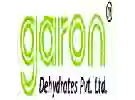
Château GermanLa Foret Côtes de Castillon
In the mouth this red wine is a powerful with a nice balance between acidity and tannins.
This wine generally goes well with poultry, beef or veal.
Taste structure of the La Foret Côtes de Castillon from the Château German
Light | Bold | |
Smooth | Tannic | |
Dry | Sweet | |
Soft | Acidic |
In the mouth the La Foret Côtes de Castillon of Château German in the region of Bordeaux is a powerful with a nice balance between acidity and tannins.
Food and wine pairings with La Foret Côtes de Castillon
Pairings that work perfectly with La Foret Côtes de Castillon
Original food and wine pairings with La Foret Côtes de Castillon
The La Foret Côtes de Castillon of Château German matches generally quite well with dishes of beef, veal or game (deer, venison) such as recipes of pot roast, roast veal orloff with mushrooms or mymy's golden apples (squash).
Details and technical informations about Château German's La Foret Côtes de Castillon.
Discover the grape variety: Aramon
Aramon noir is a grape variety that originated in France (Languedoc). It produces a variety of grape specially used for wine making. It is rare to find this grape to eat on our tables. This variety of grape is characterized by large bunches and very large grapes. Aramon noir can be found in several vineyards: South-West, Cognac, Bordeaux, Provence & Corsica, Rhone valley, Languedoc & Roussillon, Loire valley, Savoie & Bugey, Beaujolais.
Informations about the Château German
The Château German is one of of the world's greatest estates. It offers 8 wines for sale in the of Castillon - Côtes de Bordeaux to come and discover on site or to buy online.
The wine region of Castillon - Côtes de Bordeaux
The wine region of Castillon - Côtes de Bordeaux is located in the region of Côtes de Bordeaux of Bordeaux of France. Wineries and vineyards like the Domaine de l'Aurage or the Château la Clariere Laithwaite produce mainly wines red, white and pink. The most planted grape varieties in the region of Castillon - Côtes de Bordeaux are Merlot, Cabernet franc and Cabernet-Sauvignon, they are then used in wines in blends or as a single variety. On the nose of Castillon - Côtes de Bordeaux often reveals types of flavors of cherry, savory or espresso and sometimes also flavors of baking spice, cigar box or tar.
The wine region of Bordeaux
Bordeaux, in southwestern France, is one of the most famous, prestigious and prolific wine regions in the world. The majority of Bordeaux wines (nearly 90% of the production Volume) are the Dry, medium and Full-bodied red Bordeaux blends for which it is famous. The finest (and most expensive) are the wines of the great châteaux of Haut-Médoc and the right bank appellations of Saint-Émilion and Pomerol. The former focuses (at the highest level) on Cabernet Sauvignon, the latter on Merlot.
The word of the wine: Chaptalization
The addition of sugar at the time of fermentation of the must, an ancient practice, but theorized by Jean-Antoine Chaptal at the dawn of the 19th century. The sugar is transformed into alcohol and allows the natural degree of the wine to be raised in a weak or cold year, or - more questionably - when the winegrower has a harvest that is too large to obtain good maturity.











